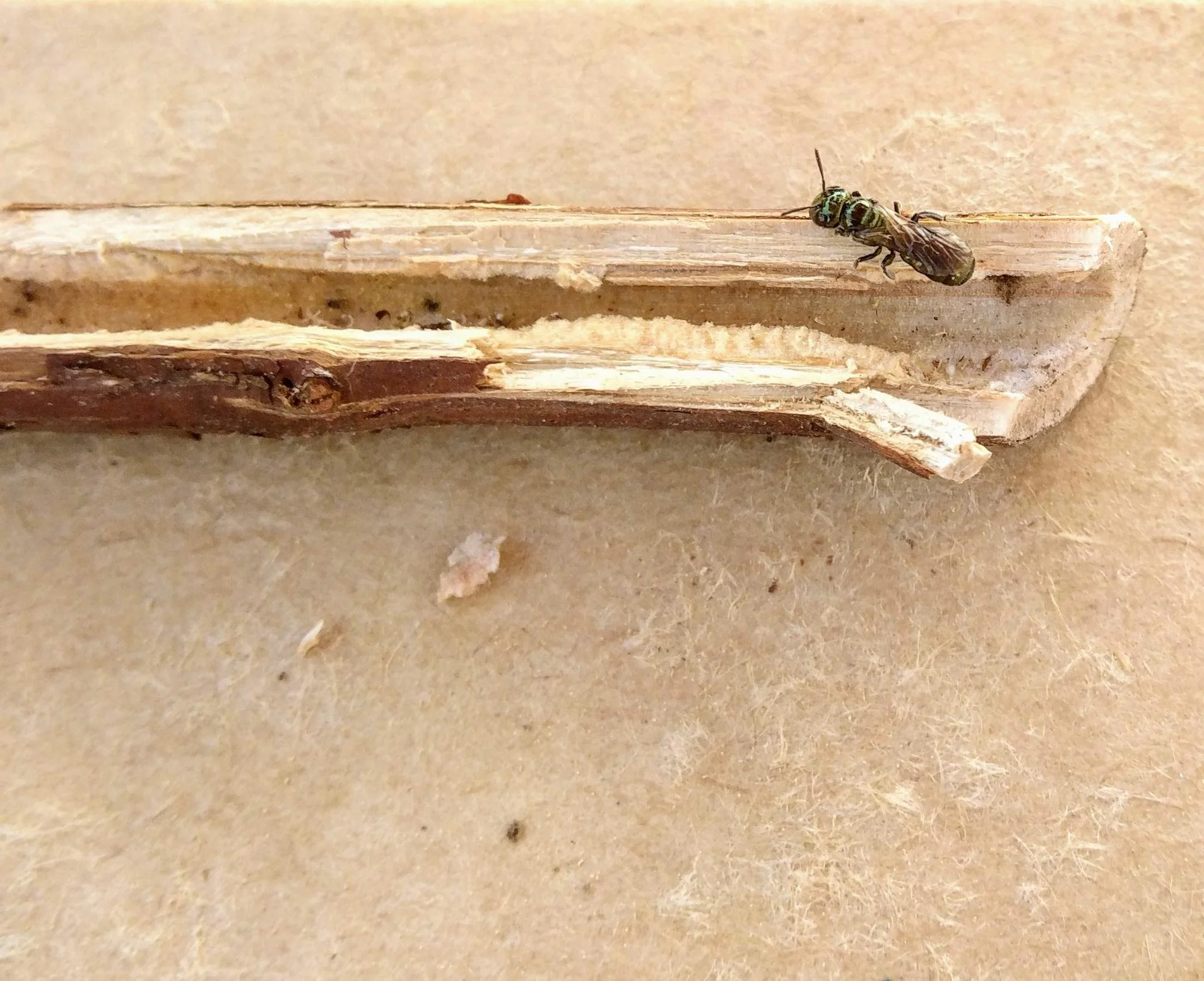Raspberry Pruning
Community Gardens Director Emily Kern Swaffar and Community Gardens Coordinator Rye Dickson will walk you through how to prune your raspberries in order to increase plant health and fruit production white also creating habitat for native bees! Please watch our video below and then read the rest of the blog for some additional information on pruning and pollinators.
More on pruning
We recommend pruning your raspberry patch in mid May, after the second year canes (floricanes) and first year canes (primocanes) have already started sprouting new growth. Because we are primarily focused on just cutting back old floricanes that have already produced fruit, it doesn’t matter that our plants have come out of dormancy. However, if you are planning to do a major thinning of your raspberry patch and cutting back any first or second year growth, it is best to do that earlier in the spring while the plants are still dormant.
Our video explains the pruning process for Floricane fruiting raspberries, which are canes that produce fruit in their second year of growth (usually summer-bearing varieties). We then cut them back on their third year, after they’ve produced fruit. There are also varieties of raspberries called primocanes, which produce fruit during their first year of growth (usually fall-bearing varieties). The pruning process for primocanes is different, because they can all be cut back every year and you want to make sure you cut them back while they are in dormancy- in late fall or early spring before temperatures warm up.
Trellising
Another great thing you can do for your raspberry patch is to support it with trellising. There are many different methods of trellising for raspberries, but one of the simplest and lowest cost options is to use T-posts or wooden posts and wire to support each row of raspberries and keep them from flopping out into your walking paths. If you are interested in more information and other methods of trellising raspberries, check out this webpage.
This photo from the Oregon State Extension Service website was taken by Jocelyn McAuley. It shows a native carpenter bee that often nests in the pithy stems of old raspberry stalks.
more on pollinators
Keep an eye out for holes like this in the pith of your old raspberry canes! These are indicators that you have insect friends nesting in those canes. Pay special attention and leave those canes intact in your patch whenever possible!
Raspberries are pollinated by many native bee species, including various species of carpenter bees, bumble bees, leafcutter bees, and cuckoo bees. Other native pollinators such as wasps, flies, and butterflies also visit raspberry flowers. For more on raspberry pollination visit this guide. For more on creating year round habitat for your native pollinators, check out this blog.
Raspberries not only provide nectar and pollen for a variety of native insects, but they also provide excellent nesting sites. Look for holes in the pith of your old raspberry canes- these are indicators that you have insect friends nesting in those canes! Native bees will lay eggs and provision them with pollen in the old canes. These eggs will overwinter, develop, and hatch out as bees in the spring to pollinate your raspberries! So leaving old stalks for at least a year is essential for the completion of the bees’ lifecycles. As mentioned in the video, leaving piles of old stems near or in your raspberry patch is a great way to create nesting habitat. Another great way is to leave a foot or more of the old raspberry canes when pruning. Depending on your variety of raspberry the stalks may or may not grow back, but experiment with it and see what happens!
Happy Pruning!
Another example of a stem that is likely inhabited by native bees, or another beneficial insect.



